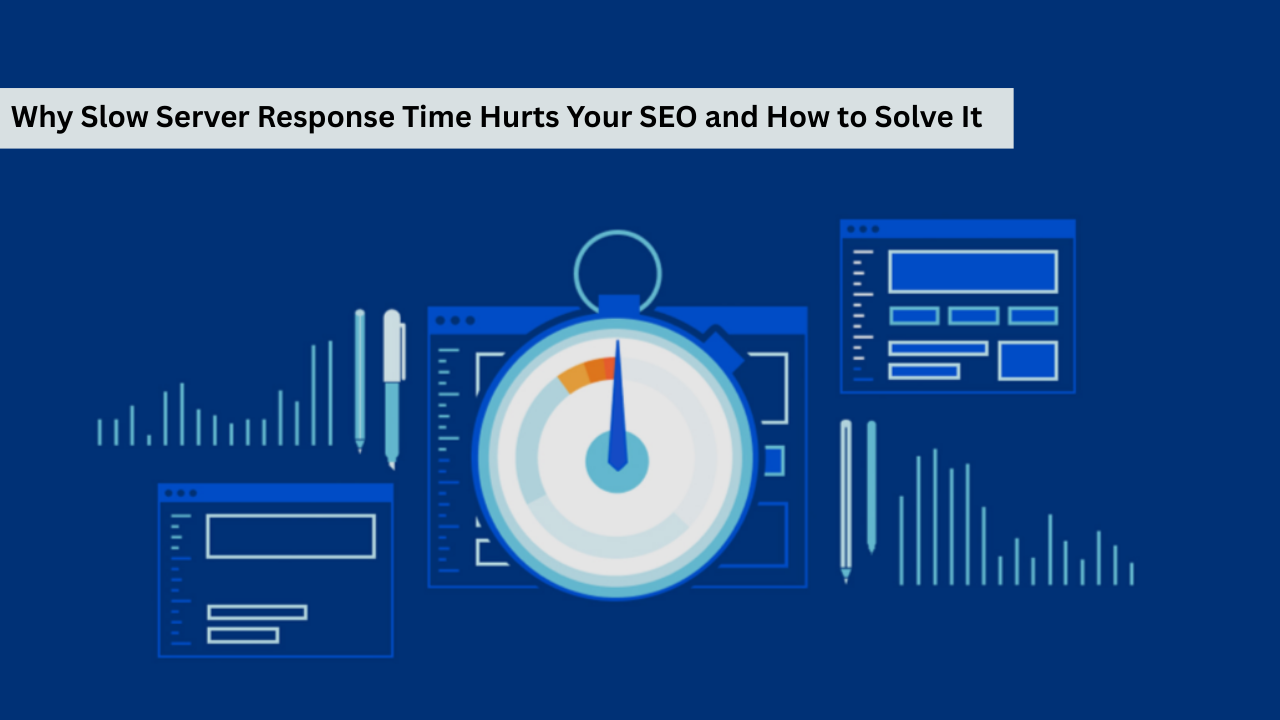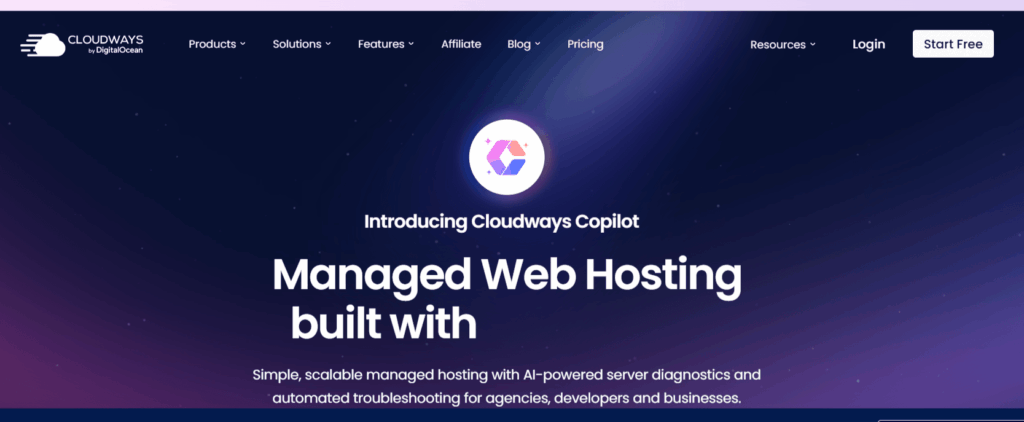
Why Server Response Time Critically Impacts Your SEO (And How to Fix It Fast)
- accuindexcheck
- 0
- Posted on
Server response time refers to how long a server takes to reply when a user attempts to access a web page. It is a measurement from the time of making a request to a time when the first byte of data is sent back. So, it measures how quickly the server responds when visitors come to your site.
Fast website performance is vital for strong SEO and a positive user experience. Google favors websites that load fast and users tend to stay longer on such sites. Slow server response suppresses your site’s ability to get higher rank in the search engine results pages (SERPs), and people might abandon even before the page loads.
Hence, in this guide, we will outline reasons why server response time affects SEO, the usual causes of slow response times, and the things you can do to fix and improve it.
What does Server Response Time mean in GSC Crawl Stats?
Server response time in the Google Search Console is how long it takes for a server to respond after a request from a browser or device is made to load a web page. In other words, it is how fast a server reacts when somebody tries to open the site.
Other than slow server responses lessening the visitor user experience, it may also cause blank screens, external layouts, or half-load images. A slow response frustrates site visitors; it also decreases overall page speed and site stability.
In general, server response time is highly correlated with the concept of Time to First Byte (TTFB). TTFB measures how long it takes for the user’s browser to receive the first byte of data from the server. Hence, a large TTFB value leads to slow page load and an increase in drop-off rate by visitors.
Some cases to consider:
- Great server reaction: Under 200 ms.
- Average response time: 200-600 ms.
- Anything beyond the 600-millisecond point is called long, and actual delay will be felt by the end user.
Why Server Response Time Is Important for SEO
Google and other search engines want to present the very best websites to users. Speed is one of the factors under consideration, with server response time contributing substantially to it. A slow response from the server ranks against the site as it suggests that the website may not offer a smooth experience.
Impact on Google Algorithm
Google has, time and again, stated that site speed is indeed one factor that affects ranking. If your server response time is slow, your pages will surely be displaced further down the list by their faster competitors.
User Experience Signals
It is enough to test a bit of patience for visitors. When visitors leave fast (high bounce rate) or spend not enough time on the site, it points to negative signals for the search engines. Likewise, users will more often engage with a fast website and conversion to sales.
Mobile-First Indexing and Core Web Vitals
Today, most browsing happens on mobile, and Google suffers listing with mobile-first indexing. If, therefore, the mobile-site application is slow, then rankings also take a hit. The server response time affects those Core Web Vitals, which constitute the very metrics that Google uses to measure a page experience.
Usual Causes of Slow Server Response Time
A slow server doesn’t happen merely like that, there are often a handful of usual suspects behind. By knowing these, you stand a better chance locating the actual culprit that is slowing down your site.
Weak or Overcrowded Hosting
Low-cost, shared hosting means sites have to compete for the same resources. When at least two sites receive traffic simultaneously, performance degrades, and the server takes more time in responding.
Poorly Optimized Code or CMS

These unnecessary scripts, heavy themes, and outdated server-side setups (say WordPress, Joomla, or Drupal) just multiply server strain. If the backend is not optimized, then the requests take longer in the processing.
Bloated Databases
The accounts may be clogged with unused entries, logs, and unwanted data with time. Large, poorly optimized databases can slow down data retrieval, leading to delays in serving content to users.
Excessive Plugins or Add-ons
The more plugins you install-, especially low-quality ones-the more processes the server has to handle. Each additional feature may introduce extra requests that slow down time-to-respond.
No Proper Caching System
Caching enables the server to keep data frequently needed and serve such data immediately. Without such a cache, each visit would require the server to build the page completely, which takes quite some time.
How Does Server Response Time Influence SEO?
The server response time affects the experience given to search engines as well as users by your site. A slow server means that every page request will take a long time to be presented, damaging both rankings and user engagement.
Search engine crawling – Google and other search engines have a crawl budget, which in other words means that they only spend a limited amount of time crawling your site. Therefore, if the server response is slow, fewer pages will be crawled, and some of your contents may be left undiscovered.
Ranking signals – In site speed as a ranking factor, Google puts site speed, meaning that, the longer the response time, the slower the page will load, thus negatively impacting Core Web Vitals, like Largest Contentful Paint (LCP) and First Input Delay (FID).
User experience – A page is expected to load, and users want it to do so rapidly. Slow on response, they start leaving the site halfway through its load. It increases bounce rate and decreases session durations, which become indirect negative signals through search engine resources to perceive the page as offering bad experience.
Conversions and trust – A website does not inspire trust and does not incite a user to stay, explore, or convert, hence, calling conversion opportunities into question and on the other street, tarnishing site-level notoriety in Google’s eyes.
7 Ways to Reduce Server Response Time
A slow server could frustrate visitors and increase bounce rate, and, above all, it will hurt your Google rankings. Here are the ways in detail that you can use to reduce server response time and ensure that your website stays smooth.
1. Select a Reliable Hosting Provider

Your hosting provider constitutes the fundamentals of your website performance. You can expect slow response times if the host runs outdated servers or simply stuffs hundreds of websites on a single server.
- Shared host is a bad choice: On shared servers, your site competes with hundreds of others for resources. A bottleneck could occur during peak hours of traffic.
- A better option would be to opt for a VPS hosting, which dedicates a specific portion of the server resources to your website alone, thus allowing you stability and speed.
- A dedicated server is a full-fledged computer dedicated purely to your site; thus, ideal for sites that encounter heavy traffic and demand optimum performance.
- Cloud hosting (AWS, Google Cloud, Azure, DigitalOcean) gives you scalability and global reach. You can unleash resources as the demand plummets and get them back during heavy traffic, hence ensuring your site never takes any hit.
2. Use a CDN (Content Delivery Network)

Using a CDN lets one site get delivered from the server location nearest to the visitor. Therefore, this can be used to reduce delays caused by distance.
- Working process: A CDN disperses copies of website content to a multitude of servers throughout the world. When the site is visited by anybody, the CDN selects the nearest server for speedy delivery of the content.
- Worldwide advantage: Let’s say your primary server is located in the US and someone from India is visiting; in the absence of CDN, the request is supposed to travel halfway across the globe. With CDN, the content gets delivered locally, thus saving huge time.
- Lesser load on the server: A CDN lowers the number of requests that come to your origin server, thus minimizing the possibility of slowdowns during periods of high traffic.
- Security perks: Most CDNs also safeguard your site against DDoS attacks, and they provided your SSL to guarantee secure connections.
3. Set up Caching
Caching is one of the easiest ways of speeding up the server response time as it lessens the times the same content has to be generated.
- Server caches hold a pre-generated version of perhaps a few pages so that the server need not generate an entire page this time. For example, instead of making expensive database queries, the cached page is served by the server.
- Browser caches retain static files such as CSS, JavaScript, or images. When the visitor returns, those files are not sent over the network again; rather, served from local storage.
- Third-party Caching Tools: Like Varnish Cache, Memcached, and Redis-type tools can really stop some tasks from overburdening the server. Plugins like WP Rocket or W3 Total Cache can be used by WordPress.
4. Optimize Your Database
Databases grow bigger as time passes, and if ineptly maintained, they become bloated and sluggish while interacting with the server.
- Remove unnecessary data: An unwanted post revision, spam comments, unused tags, and expired sessions are just a few examples of what would constitute clutter in your database. Regular cleanses open up space and speed up queries.
- Index properly: Indexing properly allows your database to find what it needs faster rather than plowing through records irrelevant to the indexed query.
- Optimize queries: A poor query will take too long to run. Proper query optimization or database restructuring can reduce response time to a great extent.
Those users have access to various database management tools, including the WP-Optimize plugin for automatic cleanups, whereas others might prefer phpMyAdmin or using manual optimization commands in MySQL.
5. Reduce Unnecessary Plugins or Extensions
An excessive number of poorly coded plugins or extensions can be a serious load on your server, although they build functionality for websites.
- Perform plugin audits regularly and remove any plugins that you do not actually use. Sites install plugins to test a feature and never get around to removing it, which is wasting resources.
- Eliminate duplicates: Just sometimes plugins perform similar functions. Replacing them with one multifunctional plugin reduces overhead.
- Always check quality: Only install plugins from trusted developers. Cheap and unproven plugins may contain inefficient code that halts the speed of your site.
- Keep everything up to date: Keeping inaccessible plugins and outdated themes not only reduce the speed of your site but also put it at least some risk.
6. Try Efficient Coding and Light Themes
Slow bloated codes unsettle a server to process a request speedily.
Minify files: To minify an HTML file or CSS or an intrude upon a JavaScript file is to reduce its size by removing all whitespace, comments, and formatting.
Combine the files: Instead of loading several CSS and JS files, combine them to initiate fewer server requests.
Lightweight themes: Most of the said themes are not attractive and laced with flashy features which hamper site speed; hence go for those that are developed optimally concerning performance, such as GeneratePress, Astra, and Neve.
Regular Testing: Scan for any code errors affecting performance using GTmetrix, Pingdom, and Google PageSpeed Insights.
7. Enable File Compression
Compressed files become zipped and send faster to the user.
- Gzip compression: Gzip can compress files until 70% fewer in size for text-based files (HTML, CSS, JS); hence they have speeds of loading for the users.
- Brotli compression: A newer type of compression and frequently can shrink a file more than Gzip.
- Easy setup: Both methods can be activated at the server level (Apache, Nginx), but their functionality can also be extended through plugins available for CMS platforms.
FAQs
What Is Good Server Response Time?
Good response time is under 200 milliseconds (ms). Basically, it means that a server should be in a position to begin sending data to a browser in less than one-fifth of a second. Any response having compared with 600 ms is considered slow and may deter user experience and SEO rankings.
How to test the server response time?
You may put the server response time to test using free tools such as Google PageSpeed Insight, Pingdom, GTmetrix, and Webpagetest, to name a few. These sets of applications indicate how long your server takes to respond before the page begins loading. Other than that, server logs can be checked or monitoring services such as New Relic and Datadog can be adopted for more insights.
What Is Normal DNS Response Time?
A general DNS response time interval is 20-120 ms. This is the time your browser will take to look up for the server IP address before it can serve up the site. If DNS response takes much longer, it can delay the very beginning of the whole page loading process.
Do plugins and themes really affect response time that much?
Yes. Window-dressing add-ons or heavy themes may load extra requests, database calls, and scripts that slow the server. Less plugins and more heavy themes–have a great big impact!
Is the SRT that same for all users in the world?
No. Usually, the ones close to your server’s data center get fast responses. Users away might experience delays unless you use a CDN to push or pull content.
Can a CDN fix slow server response time completely?
Being a content delivery network, it fixes the issues, delivering cached content from servers closest to the users. Any other thing in the backend such as inefficient code, databased queries, or overloading of the hosting will not be addressed. It must form part of a larger optimization procedure.
Conclusion
Slow servers increase bounce rates and reduce conversions and also make it difficult for Google to crawl pages and rank them. But a faster and more reliable server response can enhance Core Web Vitals, improve SEO rankings, and engage visitors.
The best part about this is that you can actually do something about server response time. A faster server response time, and therefore faster loading, can be attained by looking for better hosting, using a CDN, enabling caching, optimizing your database, and keeping your code lightweight. A fast, search-friendly, and growth-ready website will be on your hands if you keep monitoring and optimizing it.